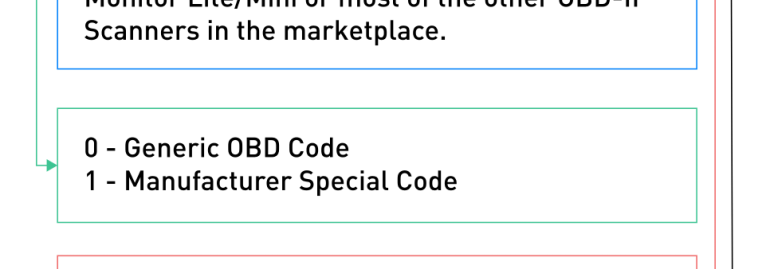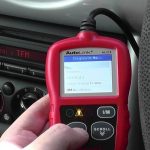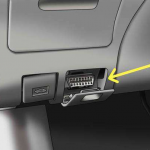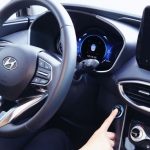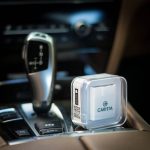If you are planning to use ODB2 as a database for data analytics, you need to know how to use CAN bus. CAN bus data is one of the most important types of data and has a lot of applications. Here’s how to use CAN bus data and its features. Read on for more information! We’ll also discuss CAN IDs, CAN loggers, and Generic mode.
CAN bus
CAN is a data bus used to communicate among various systems within a vehicle. Typically, there are multiple systems on a single 2-wire bus, each of which does a specific job. In a car, this may be an engine controller, instrument display, tire pressure sensor, or some other device. The CAN protocol also has applications in industrial control. A CAN message contains up to eight data bytes. The first digit of a CAN message is the device ID. Like an ethernet MAC address, this number is used to identify the node that the message is sent to.
CANbus and OBD2 both use the same connector to communicate with the vehicle. However, the CAN bus has much higher speeds than OBD2, and the two protocols have different purposes. CAN is a communications protocol used for high-speed data transmission, while OBD2 is a slower way to read the digital screen of a car. OBD2 is the standard for vehicles built from 1990 and is used by many aftermarket device manufacturers. CANbus devices can broadcast data to a network, whereas OBD2 devices must be asked for the information. Because CANbus has much higher speed, it allows for multiple data sources to be transmitted in one message.
CAN bus OBD2 data is standardized in its PID format, with the PID value being 18DB33F1. The length of the data for a request and response is typically three to six bytes. The response is usually one of a vehicle’s CAN IDs, which range from 18DAF100 to 18DAF1FF. However, the PGN value 0xDA00 (55808) is reserved for ISO 15765-2. CAN software tools are designed to decode OBD2 data.
CAN IDs
What are CAN IDs in OBD2 data? A CAN ID is a unique number that identifies a vehicle. The system is based on a common standard for vehicle data communication. A diagnostic reader sends a PID query to the ECU of a car using a specific CAN ID, such as 0x0C. The response is typically a value within the range of 7E8h to 7EFh. Some cars are equipped with GPS-2-CAN module and may receive data from gyroscope and accelerometer.
CAN IDs are used for a number of applications, including vehicle diagnostics. If the diagnostic reader can identify a specific ECU ID, it can continue communication with that ECU. Other processes on the CAN bus may use a specific ID, including physical addressing. CAN IDs are used for more than just OBD2 communication, as physical addressing uses particular CAN IDs for specific modules.
CAN IDs can be a challenge for many automotive diagnostics. The ODB2 data format is a standard SUBPROTOCOL for the CANBus bus. It includes several different bus systems, including ODB, CAN-II, and DTC. The ODB2 data format includes CAN IDs as well as the CAN bus. CAN messages have up to 8 bytes of data.
CAN loggers
If you’re trying to find a reliable and inexpensive CAN logger for your car, you’ve probably come across some information about the protocol and what it’s all about. OBDII is a transmit/respond type of protocol that uses message multiplexing. Essentially, it means that you need to periodically ask the car for data in order to collect it. To get started, however, you’ll need a CANFDuino and a CAN card.
The CANedge1 is the perfect solution for late-stage field testing because it’s plug-and-play and is pre-configured for easy installation. This device can then be easily configured and analyzed with your favorite CAN tools. The CANedge1 also supports the asammdf API and GUI. Once you’ve installed it and configured it, you’ll be able to analyze the data in a matter of minutes.
The CANedge connects to the car’s OBD2 connector. Once connected, it will begin to log the raw CAN bus data that the car broadcasts. The CAN bus is a standard communication protocol used by automobiles. By logging this data, you can learn more about your car’s performance, improve its fuel economy, and save money. These are all good reasons to buy a CAN logger for your car.
There are a wide range of CAN loggers available for cars, from the inexpensive to the highly technical. The SoloStorm Connectivity Package comes with a Bluetooth OBD II reader and is a great addition to your GPS Package. It enables logging of RPM, throttle position, vehicle tuning and more. For those who want to take the next step up, you can opt for the RaceCapture/Track Package. These units are compatible with CAN OBD II compliant vehicles and can also record steering angle data on some vehicles.
Generic mode
If you want to get the most out of OBD II diagnostics, you should consider using a generic scan tool. This mode is still compatible with OBD II systems, and it can give you the most basic information about your car’s system. This type of diagnostic tool will be able to erase trouble codes and freeze frame data. The following are some things to consider when selecting a generic scan tool.
The first step in decoding any diagnostic data is to understand what it is. Oftentimes, the information provided is in hexadecimal format. This means that the data is stored in a language that is different than what is typically used in computer languages. For instance, a car’s ECU uses a different language than the ‘hex’ code. In the case of OBD II data, a car’s code is stored in a format that is readable to the odometer.
One of the most important things to consider when deciding what to look for in your OBD2 diagnostic tool is the quality of the data. A good scan tool should display all of the available DTCs, even the ones that are obscured. Also, you should know that not all scan tools will display all codes. Generic mode for odb2 data
MAP sensor
OBD2 data for a MAP sensor is typically displayed by the car’s onboard diagnostics system. This data allows you to diagnose a variety of problems, from intermittent engine performance to a more serious problem such as a faulty sensor. Using an OBD II scan tool, you can check the MAP sensor’s PID (proportional-integral-derivative) value, which is calculated from inputs from the sensors and engine speed. A normal reading for the MAP sensor should be 29 “HG (+-1), while a higher number indicates a problem with the sensor’s circuit.
The MAP sensor is a vital component in the engine. Most people don’t know much about it, and only think of it when something goes wrong. But the truth is that a malfunctioning MAP sensor can cause a wide variety of engine performance problems. If you’re experiencing symptoms of engine trouble or have questions about the operation of your MAP sensor, then this article is for you. Here, Delphi Technologies explains the causes and symptoms of a faulty MAP sensor.
Once you have diagnosed your car’s MAP sensor, you can then proceed to troubleshoot any issues with the MAP sensor’s circuitry. First, make sure that the sensor’s connector is connected securely. Ensure that the wires are straight and clean, as chafing or broken connections can lead to short circuits. If you’re unsure, you can try a jumper harness to see if the sensor sends 5 volts down its signal wire.
CAN-based performance tuners
CAN-based performance tuners use ODB2 data to communicate with each other and update software. In addition, this protocol is capable of utilizing data from other vehicles and ECUs. The speed of communication using CAN varies from 10kpbs to 1Mbps. The speed also depends on the length of the wire used. A 40-meter-long wire will have a speed of 1Mbps, whereas a 1000-meter-long wire will be at 50kbps.
Each CAN message contains four datasource updates. In addition, the CAN bus supports hundreds of data sources, allowing for seamless digital dash response. This makes CAN-based performance tuners the most versatile. Using a CAN-based performance tuner can improve your vehicle’s response times and improve overall fuel efficiency. Its benefits are extensive, so don’t hesitate to give it a try.
The CAN protocol is a high-speed communications network that was adopted by automakers globally in 2006. CAN devices can send and receive data without asking for information from the vehicle. They broadcast the data directly to the CAN bus, and any other device on the network can receive it in real time. Moreover, CAN devices can send the values of several datasources in one message, whereas OBD2 only allows for one datasource to be sent at a time.
Performance tuners and loggers that use CAN-based data can access critical vehicle systems through the dashboard port. Data loggers can record everything from fuel economy to lap times and power output. These tools are popular among professional racers and enthusiasts alike. In addition, OBD2 protocols are designed to be fast and accurate, but not at the expense of performance. For these reasons, CAN-based performance tuners are essential for tuning a vehicle’s performance.


